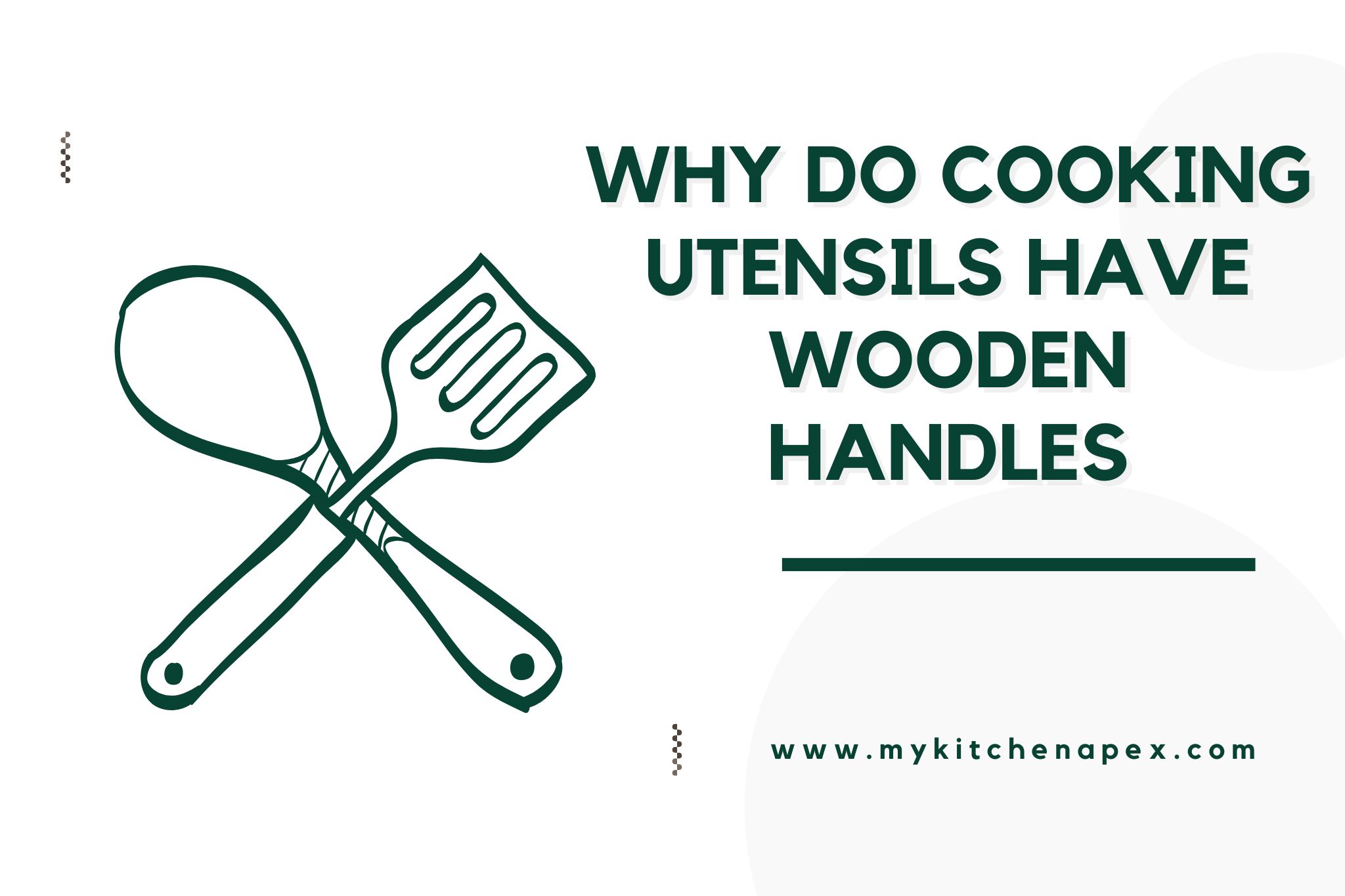Originally Created on: February 28, 2024 @ 4:37 am
Have you ever wondered why cooking utensils have wooden handles? There’s something undeniably comforting about the warmth and natural feel of wood in the kitchen, isn’t there?
Wooden handles on cooking utensils have been a staple in kitchens for centuries, but their practicality goes beyond just aesthetics. They offer benefits that go beyond the surface, making them a popular choice among home cooks and professional chefs alike.
Table of Content
Highlights:
- Wood is a poor conductor of heat, staying cool to the touch
- Ergonomic, providing a comfortable and secure grip
- Durable, easy to maintain, and adds rustic charm to the kitchen
why do cooking utensils have wooden handles
Cooking utensils have wooden handles for several reasons. Firstly, wood is a poor conductor of heat, which means that the handle will stay cool to the touch even when the utensil is used in high-temperature cooking.
This helps to prevent burns and makes the utensil more comfortable to hold while in use. Additionally, wooden handles are also more ergonomic, providing a comfortable and secure grip for the user, reducing the risk of accidents while cooking.
Furthermore, wood is a durable and long-lasting material, making it suitable for frequent use in the kitchen. Wooden handles are also generally easy to maintain and clean, ensuring that the utensil remains hygienic for food preparation.
Finally, wooden handles also add a touch of rustic charm to the kitchen, enhancing the overall aesthetic appeal of the utensils and contributing to a warm and inviting cooking environment.
You May Also Like: are aluminum cookware safe
Pros and cons of wooden handles on cooking utensils
Wooden handles on cooking utensils have both pros and cons. One advantage is their aesthetic appeal and natural feel, adding warmth to the kitchen. Additionally, wooden handles can provide a comfortable and secure grip, making it easier to handle hot pots and pans.
However, wooden handles require more maintenance than other materials, as they can absorb odors and stains. They are also more susceptible to cracking or warping when exposed to moisture and heat.
Furthermore, wooden handles may not be as durable as metal or plastic ones, making them more prone to wear and tear over time. On the other hand, they are less likely to transfer heat, reducing the risk of burns when cooking.
Overall, while wooden handles may offer a classic and comfortable grip, they require more care and may not be as long-lasting as other materials.
How to clean and maintain wooden handle cooking utensils?
To clean and maintain wooden handle cooking utensils, start by handwashing them with warm, soapy water after each use to remove food residue and prevent bacterial growth. Avoid soaking the wooden handles in water for extended periods as this can cause the wood to warp or crack. Instead, dry the handles immediately with a towel and allow them to air dry completely before storing them.
Additionally, it’s important to regularly treat the wooden handles with mineral oil to keep them moisturized and prevent them from drying out and cracking. Simply apply a small amount of mineral oil to a clean cloth and rub it into the wooden handles, allowing it to penetrate the wood.
This helps to protect the wood from moisture and maintains its natural beauty. By following these simple cleaning and maintenance steps, you can ensure that your wooden handle cooking utensils remain in excellent condition for years to come.
Also Read: are non stick cookware safe
Can wooden handles withstand high cooking temperatures?
Yes, wooden handles can withstand high cooking temperatures if they are made from heat-resistant wood such as teak, cherry, or oak. These types of wood can tolerate temperatures up to 450°F without scorching or charring, making them suitable for use in the kitchen.
It’s important to note that wooden handles should be regularly maintained with mineral oil to prevent drying out and cracking from exposure to heat.
In addition, it’s essential to check the manufacturer’s guidelines for specific cookware to ensure the wooden handles are designed for high-temperature use. Some wooden handles may be coated with a protective layer or have metal reinforcements to enhance their heat resistance.
By choosing cookware with properly treated wooden handles, you can safely use them for cooking at high temperatures without concern for damage or safety hazards.
Why do people use wooden cooking utensils?
People use wooden cooking utensils for several reasons. First, wooden utensils are gentle on cookware, making them ideal for non-stick pans and pots. This helps to extend the life of the cookware and prevent scratching and damage.
Additionally, wooden utensils do not conduct heat, making them safe to use in hot pots and pans without the risk of burning the user’s hand.
Furthermore, wooden utensils are also naturally antibacterial, making them a hygienic choice for cooking and food preparation. The natural oils in wood have antimicrobial properties that help to inhibit the growth of bacteria and germs on the utensils, reducing the risk of food contamination.
This makes wooden utensils a popular choice for those who prioritize food safety and cleanliness in their kitchen.
Also Read: why do frying pans have a hump in the middle
Final Thoughts
Wooden handles on cooking utensils offer a mix of advantages and drawbacks. They provide a comfortable and cool grip, but require regular maintenance to prevent warping and cracking. To maintain them, handwash and dry the handles immediately, and treat them with mineral oil to prevent drying out.
If made from heat-resistant wood, they can withstand high cooking temperatures, making them suitable for kitchen use. Additionally, wooden utensils are gentle on cookware, do not conduct heat, and have natural antibacterial properties, making them a hygienic choice for food preparation.

